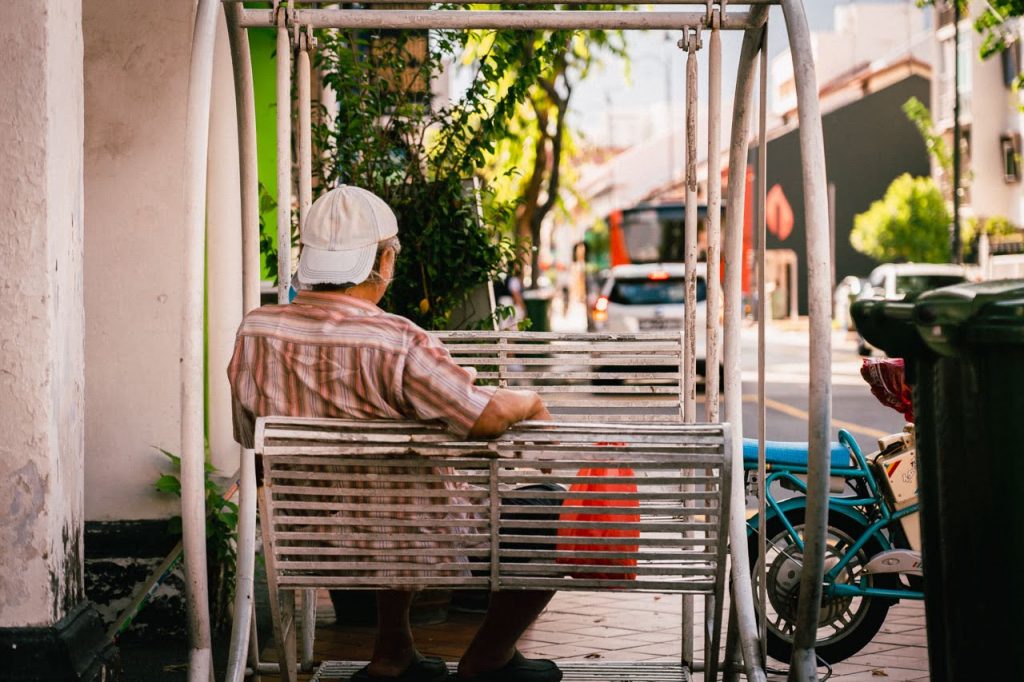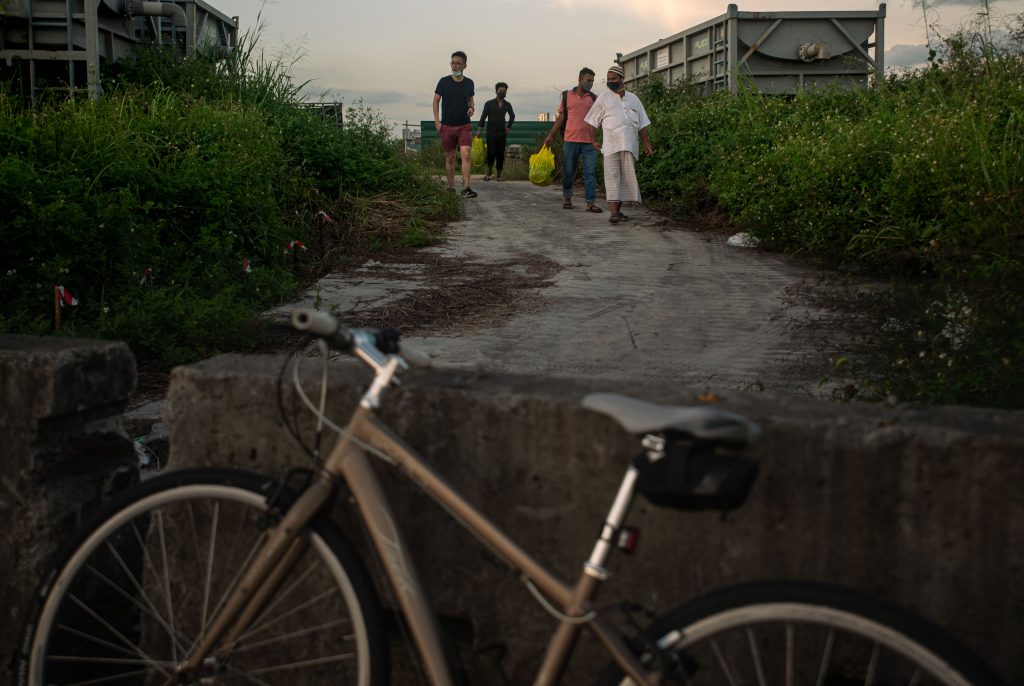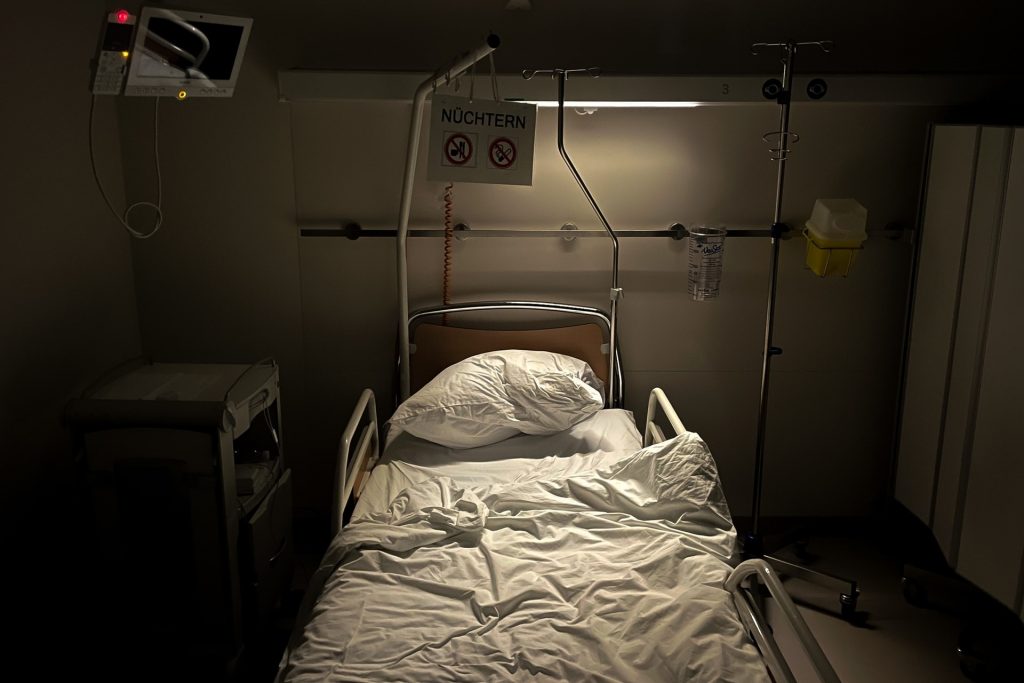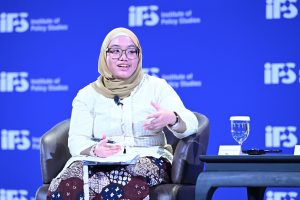Top image: Zachary Tang/Rice Media
“Nothing can be said to be certain except death and taxes.” This excerpt from a letter by Ben Franklin in 1789 rings true nearly two hundred years later. Theoretically, the inevitable should bring comfort. No matter what kind of mess you make in your life, you’ll meet the same end as the person whose success has illuminated your failures. However, by and large, death has become an unseemly and perhaps, an inappropriate topic for polite conversation.
As of late, we are doing some magical thinking. We avoid reckoning with the inevitable. Collectively, we’ve stopped grappling with death. Modernity answers for some of this: we are less likely to die of common illnesses, our life spans have increased, we enjoy advanced healthcare and have better knowledge in nutrition and hygiene. Put simply, we’ve improved our ability to prolong the inevitable—and thus our conversations about death are handicapped.
ADVERTISEMENT
Typically there are a few stops before the final station. When thinking of death as one event in a journey rather than the whole experience, it’s the journey that we ignore, skip over, or handle poorly. What are the consequences of skipping a few stations? For relatives of the dying, it’s a loss of quality time and a lack of closure. For the dying themselves, it’s what’s left unsaid—the loose ends, amends not made, and a lack of autonomy.

Writing this article was uncomfortable. I avoid contemplating mortality. In fact, as a writer, I’m leaving a record on purpose so that some part of me lingers beyond my allotted time. I’ve had more conversations about death in the past few weeks than ever before, and as such, my perspective on the final event is irrevocably different.
Some questions came up which I didn’t have the answers to. For example, what measures do I take for my parents if there’s a critical accident or illness? I’m an only child so I’ll be the sole proxy decision-maker. They’ve never told me their wishes. On the flip side, If it were me in a critical health condition, what would I want? And who should I tell?
I wasn’t expecting to ask myself these questions at the outset of my research. Originally, I wanted to write an article about end-of-life care in the Malay Muslim community. Through this process, I realized there are no neat categories for death. It comes for everyone. Though the particulars may vary, what’s left unsaid about dying is universal.
Kata-Kata Kita
The first step in this story was a performance, Kata-Kata Kita (meaning in our words in Malay) given by Both Sides Now, a community engagement project about living and leaving well. The invitation flipped my stomach. A variety show about death and dying? No, thank you. I didn’t want to sit through a multimedia presentation on the inevitable.
But I had no choice. It was an assignment. I watched from the comfort of my bed as the performance streamed live on Facebook. The hosts bantered through a bizarre set of music, a hosted radio segment, live drama, and a panel discussion. Each layer of content grappled with Malay Muslim experiences of dying and death. Some themes explored in the performance I watched: generational tensions in estate planning and the pressures of communal proxy decision making.
In my view, the most compelling segment of Kata-Kata Kita was Radio Dukacita. The set went dark as DJ Big emerged and took calls from the audience. This portion of the show was a kind of pandemic kismet because some audience members were watching virtually—and thus sufficiently removed from the show—they called in anonymously to speak candidly about their grief.
Call after call featured mostly young people who said something along the lines of I’ve never said this to anyone before. It was as if their grief was vaulted inside and the neutrality of the radio segment unlocked it. Suddenly, people were comfortable sharing their deepest heartache.
DJ Big’s low timbre was a swaddle; comforting and secure. As the show went on, I understood the purpose of a variety show on death and dying. This topic is a multi-layered, deeply personal trajectory. There’s no one-size-fits-all and the journey isn’t always somber and reserved. There’s humor, frustration, and life in our conversations about death.
Meeting Your Maker
After the show, I linked up with two researchers who curated the subject matter. I wanted to find out more about their process and the questions which guided their research. Dr. Ad Maulod, is a Senior Research Fellow at the Centre for Ageing Research and Education, Duke-NUS Medical School. Siti Hazirah Bte Mohammad is a Research Associate there as well.
ADVERTISEMENT
For both Dr. Ad and Hazirah, personal encounters with death propelled them to take part in this project. Hazirah is keen to note that in her experience, discomfort with death is universal.
“We tried to tap into the commonalities while creating this show, to show that we’re not that different when it comes to death after all.”

But the cultural particularities for participants in the research were not ignored—they were probed, highlighted, celebrated, and dissected. Dr. Ad notes that when talking about death and dying in the Malay Muslim community, there are different flavours in the conversation.
“It’s about the journey towards meeting the maker. How do you complete this loop in your current life? Closure in one world leads to continuity in the other. It’s a journey. For dying people in our community, settling one’s affairs to meet the maker is as important as making end of life medical decisions.”
One of the key end-of-life concerns that arose during the workshop was settling affairs. Many participants spoke of the weights they carried throughout their life: wrongs were done, debts were made, regrets had piled up. Attaining closure without wreaking havoc on the family is, in Dr. Ad’s assessment, a conversation that needs facilitating during a holistic end-of-life care process.
Equalizing End of Life Care
Hazirah adds that programs like Kata-Kata Kita ultimately seek to foster a culturally competent discourse on death and dying in Singapore. She remarked that targeted community health interventions are typically done without a foundational understanding of minority cultures.
“The intentions are good. But often, stereotypes and caricatures are used to target a particular community. We’ve even internalized some of these things. For example, I’ve heard a lot that Malays don’t talk about advanced planning. Who started that rumor and is it true? It’s a generalization that’s been reinforced.”
She goes on to cite an example of an awkward, unsuccessful health intervention. When the HPB targeted Malay men in their smoking cessation efforts in 2019, they rolled out a program called Puff for Puff with Old Chang Kee, where they visited mosques and encouraged participants to trade a cigarette for a curry puff.
Dr. Ad is resolute: tokenism doesn’t work.
“Why does the community like curry puffs? Well, it’s not even about the curry puff. These are the foods they turn to because they are the rare accessible Halal options. That’s a structural barrier. “
Dr. Ad related the HPB’s dubious Puff for Puff program back to the end-of-life conversations in the Malay Muslim community.
“There’s depth below the surface of a stereotype. The reason why Malays don’t often discuss Advanced Care Planning (ACP) is because often, these services are inaccessible. Few professionals can conduct these matters in minority languages.”
ACP is a good example of how the holistic approach, though more time-consuming, is ultimately more successful. For example, in the Malay Muslim community, family dynamics are complex. Women are vocal about caregiving, but they often defer to the patriarch for family decision-making. ACP professionals should be aware of these cultural nuances.
Because after all, issues which seem unrelated to public policy, like family dynamics, are not immaterial, Dr.Ad argues:
“Understanding gender roles and family dynamics, which are not necessarily related to death per se, creates targeted health care programs that are relevant. It’s about relatability. When interventions are grounded in people’s lived experiences, then their needs are met.”
Leaving Well
Both Sides Now, the organization behind Kata-Kata Kita, stresses the importance of living and leaving well. Something I explored in conversation with Hazirah was the concept of a good death. What does a good death look like, and how can one plan for it?
In Hazirah’s view, after working in this space for four years, autonomy is highly valued by the dying. In the Malay Muslim community, there’s often some tension between the patient’s desire for autonomy and their familial duties. This is an ongoing dilemma in the healthcare industry at large as well, the tug-of-war between patient-centric and family-centric palliative care.

Since personal autonomy and family ties are often of equal importance to the patient, the challenge for healthcare providers becomes—how can we meet both needs and honour both parties in palliative care? In Hazirah’s view, this question should be front of mind for health workers.
“After working in this space for a long time, I can say that care providers don’t need to prescribe the right decision. Rather, it’s their job to equip people with information that empowers them and fulfills their sense of autonomy and the feeling of responsibility towards the family.”
Re-personalizing Grief
How we deal with what comes after end-of-life decisions and conversations impacts our perception of the journey as well. Most cultures have blind spots when it comes to expressing, understanding, and processing grief. In the Malay Muslim community, a laser focus on religious rhetoric can delay healing for those who are grieving.
“Grief is difficult in a culture where controlling your emotions is seen as a virtue,” Dr. Ad noted while mentioning that this virtue transcends minority communities, and plagues the nation at large. “These are tough conditions to express pain.”
Both Hazirah and Dr Ad stressed the importance of shouldering the pain of others when it comes to grief. When the universal journey is shouldered by many, the load on the grieving is lightened. For grief to be processed—it must be accepted, invited, and allowed in our communal spaces.
However, Dr. Ad notes some communal events are intended to help the grieving which often exacerbates their suffering. Social expectations can add layers of additional stress.
“During the Kenduri, where family members gather to eat and celebrate the life of the ones who passed, you’re not supposed to cry out. There are expectations for the bereaved: daughters prepare food, men lead prayers. It’s a double-edged sword. Yes, this space is communal, but it’s not adequate to meet personal needs.”
This is the value in performances like Kata-Kata Kita and organizations such as Both Sides Now. Public spaces to express pain and relate to the suffering of others—free from social expectations and cultural norms—liberates the grief that is vaulted in the chest or stuck in the mind.
Sharing the Burden
Dr. Ad’s personal experience with grief emphasizes the importance of these independent forums.
“Everyone told me to pray to God. People say the death of their relatives brings them closer to God. That wasn’t the case for me, so my needs as a bereaved person weren’t met. I don’t think religion is the antidote to every problem. We hear this a lot. Praying is the solution to mental health issues, stress, grief, and so on.”
As I wrote earlier, our discomfort with death is universal—no matter where you’re from or what you believe, the chances are that in polite society one tries to shut down expressions of grief because we’re not taught to hold space for it.
Hazirah mentioned the importance of creating space for other people’s pain.
“When you’re allowed to show your grief to others, you are inviting them to bear it. If we become more comfortable with sharing the pain around—actively seeing and hearing it—it would lead to a more healthy culture around loss. It’s universal. We’re all going to feel it, so why not share the burden?”
Hazirah’s missive on pain reminds me of a book from my childhood, The Rainbow Fish.
A tale of selfishness and selflessness—Rainbow Fish hoards his dazzling scales from his friends. But after some time, he is secluded in his splendour. No one can relate to him. Rainbow Fish realises that no glamour is worth loneliness. So, he peels off his fabulous scales and gives them away. In the end, everyone has a piece of his sparkle and they all shine just a little bit.
Perhaps we can do the same with our stories of grief and pain; in handing telling them to each other, we can be seen and understood, more connected and less alone.
Both Sides, Now is presented by Drama Box and ArtsWok Collaborative.







